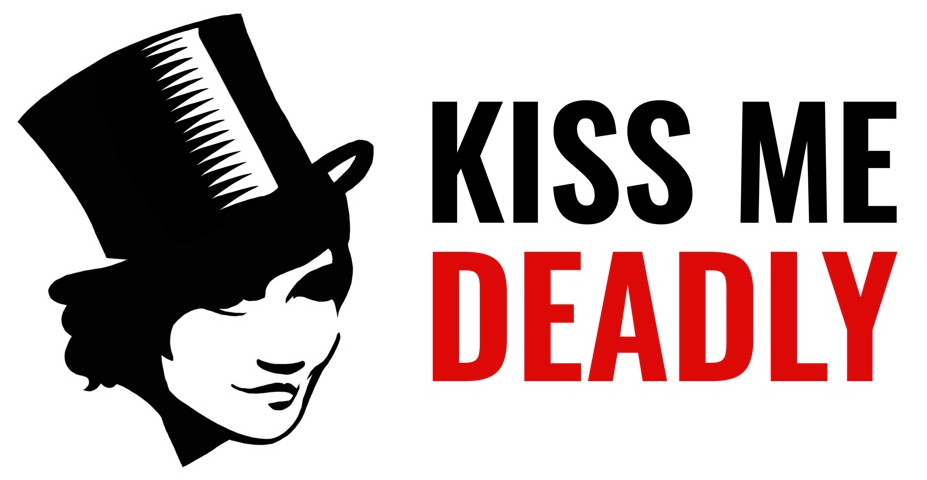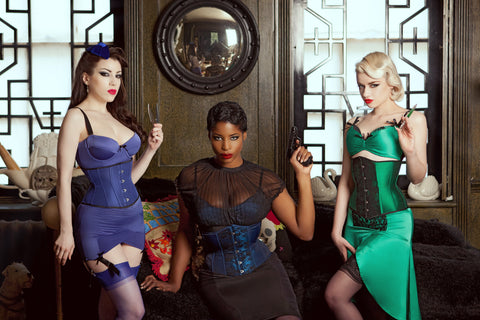In the last year or so I've received a few enquiries about why we are showing images that include knives "during a knife crime epidemic". Obviously, when reading this, please be prepared for discussion of violence.
If you don't live in the UK (about half of Deadly fans do) then it might be news to you that in the last few years here, rates of violent incidents that involve knives, result in injury from a knife or even death from a knife (our homicide rate is very low) have sharply increased, which is alarming.
However, because we were at such a low rate to start with, it should be noted that the vast majority of violent incidents in the UK still involve no weapons at all, and are, as the BBC gently points out, basically drunken brawling. In this blog, when I say violence, I'm talking about interpersonal violence, as in one person inflicting a blow on another.
I'm glad people are actually concerned about violence and the causes of violence, especially as the current increase mostly involves vulnerabl young people, and also that that people realise we do actually answer even complicated questions, but as I tend towards long answers on these, you get a blog!
Firstly, the reason there are weapons at all in the pictures are because of the femme fatale theme. Femme fatales aren't exactly the boudoir sexy trope many lingerie brands tend towards - they're dangerous and deviant. Hence, weapons, implied drinking, smoking, gambling, poisoning and whatever else we dream up. Messed up fairytales, gender-swapped British myths, historically homicidal women, the seven sins, Shakespeare-goes-50's, all sorts of things have gotten into the mix.
I think Raven Dreams provided this baseball bat, though!
Responses to this have always been quite varied - there's a certain type of man who finds it VERY alarming, which amuses me no end, because I'm never got the hang of nice.
There are also people who like to point out that we are using swords, guns, bows and arrows, axes, sabres, saws, knives, cheesewire and whatever else we had around in a shoot "wrong", and again, this is usually a man who is like "aaah gotcha!". My patience for this is short.
People from the US sometimes don't realise that absolutely none of the guns are in any way real - gun law in the UK is so strict that we are mildly concerned even taking vaguely-real-looking plastic toys with us to sessions. We've switched to travelling by car since none of us really want to end up explaining what we're doing on the train with a fake grenade, a miniature ballista and a crossbow.
Seriously though wtf, wish?!
So that's why there are weapons in the first place. But could they encourage violence?
The association between imagery and behaviour is both much, much weaker and much more complex than most people realise.
For example, I was a specialist in eating disorders, and it is very clear that although cultures that value slenderness in women tend to have more women with eating disorders, we can't actually demonstrate that that's because of the imagery. As you know, so much more goes into a culture than just the imagery it produces. We also know that eating disorders existed long before modelling and fashion were even a thing, but were thought about in a completely different way to now.
On the other hand, we know that *never* seeing aspects of one's identity reflected in your cultures idealised imagery causes issues - but not specifically eating disorders.

Turns out these swords were way too big for our petite models, by the way.
Similarly with violent behaviour, in spite of bad science-reporting that may lead people to believe that, e.g. "violence in videogames" is a key factor in whether or not people are likely to engage in violent acts, it simply isn't true. Any amount of violent media is available (I've accidentally been shown at least 3 violent video game adverts whilst writing this) - but outside of attacks on marginalised peoples, interpersonal violence has mostly been on the wane in the UK.
It turns out that media is very good at changing our view of the world, but not very good at making us Do A Thing. So you can use media to, e.g, sell people on the notion that persistent intrusion into a woman's life is "romantic" (a la every rubbish romcom ever), rather than bloody annoying verging on stalker, or that James Bond having a physical fight with Pussy Galore is a valid form of consent to sex, but people don't go out from films and then use martial arts moves on someone they fancy. But what they will do is accept the notion that this is a valid and reasonable "seduction" when something similar does happen, rather than seeing it as bad and wrong.
There is also a huge gap between the people who constitute our models and fans and the people who commit violent acts in the UK in general - and specifically with regard to current knife crime.
Our models and fans are mostly women. As a woman, your risk is mostly of being a victim and not a perpetrator. It has not decreased in the same way that other interpersonal violence has, and it tends to come from men we have been involved with, in a private setting (whereas men face more random violence in public).
The current knife crime problem not only follows this gender pattern - of being boys and men attacking other boys and men - it is predominantly very young men and down to the very early teens - usually from low-income households.
It therefore seems extremely unlikely that very stylised imagery including unusual knives held by women, mostly shown to women aged 25-55, is particularly likely to be a key factor in knife crime in the UK. Teenage boys definitely do look at our website, but it's not for the knives.

(I once got a letter from a concerned grandfather who had caught his granson looking at our site, and had then realised he was using one of our blogs on stats and manufacturing to help his business GCSE!)
As someone who worked with children at risk of young offending, I'd encourage everyone concerned to take a look at the evidence on what tends to affect violent crime in people. Personally, I want funding to be restored to all the services that were associated with reducing it. Early intervention services targeted at the under 5's, funding for children and teenagers who have developmental, learning disorders, mental health issues or any of the other things that need adaptations, funding for social care for children with any other risk factors, funding for after-school activities, community centres, youth services, support for adults with special needs trying to parent, simple things like libraries - all of these things and more have been cut.
Now, my tutors would be appalled that I have offered you no references list but I'm not sure 25 very dry academic papers is most people's favourite thing! So might I suggest this round-up from "The Conversation" instead?
As for our next shoot - we're thinking of something on a theme of Truth, Liberty and Justice, so I'm not sure there will be weapons per se, but if any of you can lend me a pointy crown . . .?


